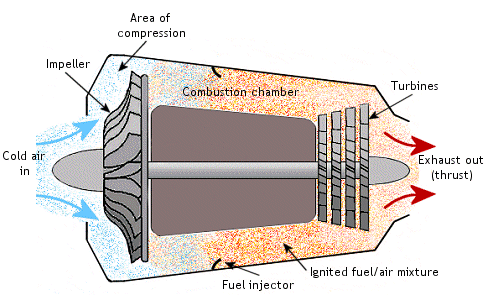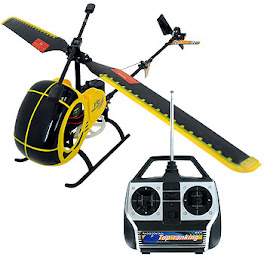NOVICE PILOTS WILL BE ABLE TO HOVER MUCH MORE QUICKLY AS THEY CAN CONCENTRATE ON THE PROPER INPUTS WITHOUT FEARING A CRASH
 The main unit (right) contains the gyros and optical sensors. The helicopter's cyclic servos are plugged into the RC module (left).
The main unit (right) contains the gyros and optical sensors. The helicopter's cyclic servos are plugged into the RC module (left).One of the barriers to enjoying RC helicopters is the lengthy learning curve and the associated crashes. Perhaps you've tried a heli in the past, became frustrated, and then put it away in the closet. The HeliCommand, distributed by MS Composit, is an autopilot that allows the beginner to learn how to hover and fly safely without the fear of accidents. The unit easily installs on most helicopters from 450-size electrics to large nitro and scale helis and also works with most transmitters. It weighs only 33 grams and includes an internal high-quality, heading-hold gyro.
The HeliCommand is unique in that it uses an optical sensor and triple-axis gyros for stabilization. In the "position" mode, the autopilot uses the optical sensor and gyros to hold the heli horizontally and in a fixed geographical position. This is ideal for learning how to hover and slow circuits. The unit will actively brake the heli if it is moving. Stick movements will override the autopilot and, if you let go of them, it will return to a stable hover. In the "horizontal" mode, the optical sensor is not used and the unit stabilizes the heli in the horizontal attitude. This is very useful if the ground surface does not have good optical quality, for low-light situations and indoors. It is also helpful for scale helis as it can be hidden inside the fuselage. If your radio system has a spare channel, you can switch remotely between the position, horizontal or off modes. When used with a proportional slider or knob, you can also adjust the autopilot gain or degree of stabilization. In all cases, the pilot must still manually control the collective pitch and tail rotor.
There are four versions of the HeliCommand: 3A, 3D, Rigid and Profi. The 3A is ideal for beginners, while the 3D version that's reviewed here adds attitude stabilization for inverted flying. The Rigid is for flybarless heads and the Profi is designed for optimal stabilization for professional aerial photographers and surveyors. An optional PC adapter and software is available and makes setup a lot easier. It also enables you to access supplementary settings for stabilization and tail-rotor gyro. If you intend to get into aerobatics, I recommend the 3D version because it can be used to expand your flight skills beyond hovering.
- MANUFACTURER: Captron (helicommand.com)
- DISTRIBUTOR: MS Composit (mscompositusa.com)
- DIMENSIONS 55*35*22.5mm
- WEIGHT: 33 grams (w/ cables)
- OPERATING VOLTAGE: 4.6 to 6 volts
- PRICE: $599 (3D version); $65 for PC adapter and software
 I mounted the autopilot under the radio tray in the Kinetic. It needs to be isolated from vibration.
I mounted the autopilot under the radio tray in the Kinetic. It needs to be isolated from vibration. The Module is mounted to the side of the receiver. The servos are plugged into it and the Module is plugged into the main unit and receiver.
The Module is mounted to the side of the receiver. The servos are plugged into it and the Module is plugged into the main unit and receiver. The optional PC software and adapter makes programming the HeliCommand a snap.
The optional PC software and adapter makes programming the HeliCommand a snap.I chose the Heli-Max Kinetic 50 (greatplanes.com) as the testbed for the HeliCommand as it is a great flying model that can be used for hover, forward flight and aerobatics training, as well as 3D. I upgraded it with a Futaba R6014FS 14-channel receiver and used a Futaba 10CH transmitter (futaba-rc.com) on 2.4GHz. The instructions mention that the HeliCommand contains an internal failsafe when using PPM/FM.
The autopilot set contents include the HeliCommand main unit, RC module, mounting bracket, double-sided mounting tape, cable ties and instructions. The instructions are very good and explain how the unit works and also feature detailed installation instructions and diagrams. If a nitro engine is used, the main unit must be isolated from engine vibration and also have a clear field of vision directly below the optical sensor. A tail-boom mounting bracket is included, but for several reasons, I chose to mount it to the front of the heli, underneath the radio tray. First, the tail-boom support struts intrude on the sensor's field of vision, and secondly, it will be protected from the exhaust.
I used CA to glue the pieces together and fabricated a mounting bracket out of ?-inch plywood and triangular balsa stock. After giving it a quick coat of Rustoleum paint to prevent any oil from the exhaust seeping in, I used double-sided tape and cable ties to secure it to the radio tray. Next, I used sticky-back Velcro to secure the unit to the mount, and added a Velcro strap as a safety measure. I then connected the aileron, elevator, and rudder servos to the RC module, and used Velcro to attach it to the side of the receiver. The cables from the RC unit were then inserted into the receiver's proper receptacle, and the main cable was connected to the main unit. As I'll be using the HeliCommand's internal gyro, I removed the existing gyro. I also cut a window into the bottom of the canopy so that the optical sensor would be unobstructed.
Although most modern radios contain mixing for various swashplate modes, these are not used as the HeliCommand contains its own mixing. This means that if your heli uses a form of eCCPM, the radio should still be set for standard mechanical mixing. After the unit is installed and all the servos are plugged-in, the setup can begin. The main unit has an LED that is used for setting up and the unit's status. First, the unit must be calibrated for the transmitter neutral points and to learn the stick direction. This is done by a series of stick movements when in the setup mode. From here, you can use the computer interface and software to set the servo directions and to tell the unit the main rotor rotation direction and orientation. If you don't have the software, you can do it manually by using the transmitter, but the computer makes it much easier. It also has additional settings for fine-tuning and advanced flight.
After you complete the setup, make sure all the servos and gyro are operating in the correct direction. Test the autopilot by rotating the heli in various directions and check if the swashplate responds properly. It should counteract any roll or pitch and the autopilot should try to level the swashplate. I put the gain on a proportional lever on the transmitter's side. Move the lever to see if the unit goes into the proper mode (position, horizontal, or off) as indicated by the LED.
IF YOU'RE TRYING A NEW MANEUVER AND BECOME DISORIENTATED, TURN THE UNIT ON AND IT WILL RETURN TO A HORIZONTAL ATTITUDE. THE PEACE OF MIND OFFERED BY THE HELICOMMAND IS PRICELESS.While the price of the HeliCommand might seem high, it is a sophisticated piece of equipment that utilizes innovative technology. It's not a substitute for an experienced instructor, but it does give the beginner increased confidence so he can concentrate on learning rather than constantly worrying about crashing. As your skill increases, you can use the HeliCommand as a "safety switch." If you're trying a new maneuver and become disorientated, turn the unit on and it will return to a horizontal attitude. The peace of mind offered by the HeliCommand is priceless.
To give the HeliCommand a realistic test, I gave aggressive cyclic commands similar to a beginner overcontrolling. As soon as I let go of the sticks, the model resumed a steady hover. I then tried some slow forward flight. In the position mode, the HeliCommand tries to stop the model and more cyclic stick movement is required. This is much less pronounced when using the horizontal mode. In a turn, the cyclic must be held in or the model will try to go back to level flight. For aggressive aerobatics, the HeliCommand must be turned off, but you can switch it on and greatly increase your chance of recovery.
The HeliCommand is a great tool for beginners and sport flyers seeking to expand their flight envelope. Novice pilots will be able to hover much more quickly as they can concentrate on the proper inputs without fearing a crash. Intermediate pilots will find they will also progress more rapidly knowing they have a "safety" switch in case things go awry.::


 Shown right is a JetCat model turbine, one of the more popular commercially produced model jet engines readily available.
Shown right is a JetCat model turbine, one of the more popular commercially produced model jet engines readily available. 






 control kits include the electric RC Ferrari FXX - TT01 from
control kits include the electric RC Ferrari FXX - TT01 from 


